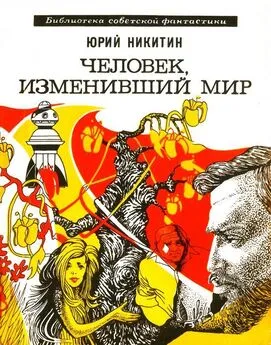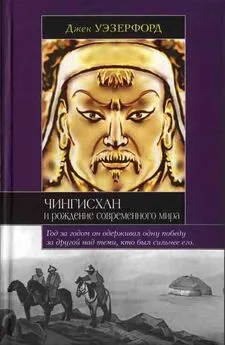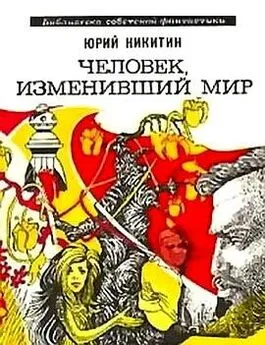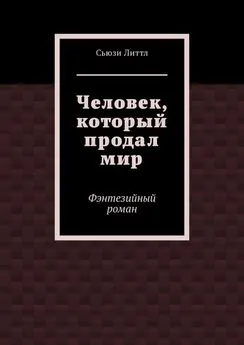Фрэнк Маклинн - Чингисхан. Человек, завоевавший мир
- Название:Чингисхан. Человек, завоевавший мир
- Автор:
- Жанр:
- Издательство:АСТ
- Год:2019
- Город:Москва
- ISBN:978-5-17-095186-4
- Рейтинг:
- Избранное:Добавить в избранное
-
Отзывы:
-
Ваша оценка:
Фрэнк Маклинн - Чингисхан. Человек, завоевавший мир краткое содержание
Чингисхан. Человек, завоевавший мир - читать онлайн бесплатно ознакомительный отрывок
Интервал:
Закладка:
336
SHW p. 278; SHO p. 129; SHR p. 176; Grousset, Empire p. 208. For a complete list of the Tartar clans and septs at Dalan Nemurges see Pelliot & Hambis, Campagnes pp. 240–245.
337
SHW p. 279.
338
Hambis, Genghis Khan pp. 72–73; Rachewiltz, Commentary pp. 572–573.
339
RT I pp. 182–183; Krause, Cingis Han p. 19.
340
SHW pp. 279–280; SHO pp. 130–131; SHE p. 79.
341
Ratchnevsky, Genghis Khan p. 99; Pelliot & Hambis, Campagnes p. 172.
342
Grousset, Empire p. 208.
343
SHO p. 135; SHR p. 84; Vladimirtsov, Le regime social p. 76. Ilkha's title was 'Senggum'. Some historians have mistaken the title for the man and refer to the Kereit prince as 'Senggum' as if this were a proper name.
344
Rachewiltz (Commentary p. 594) points out that in his contemptuous references to Ilkha, Toghril implies that the Senggum is his only son. Now it is known that Toghril had at least two sons, so either he was being distinctly unpaternal to the other one(s) or they had already died.
345
RT I p. 183.
346
SHO pp. 136–137. Others say the quid pro quo was to be marriage between Temujin's daughter Qojin and Ilkha's son Tusaqa (Ratchnevsky, Genghis Khan pp. 84–86).
347
RT I p. 184.
348
Ratchnevsky, Genghis Khan p. 68.
349
SHC pp. 88–90.
350
Свершившегося факта ( фр .).
351
SHW p. 281: SHO pp. 136–139; SHR pp. 58–61.
352
«Сокровенное сказание», § 160. — Прим. пер .
353
This is the translation provided by Waley (SHW p. 281). Onon endorses this translation except for changing the two key descriptions to 'the lark that stays with you' as opposed to 'a distant lark'. Onon claims this is the difference between the species melanocorypha mongolica and alauda (usually known as eremophila) alpestris (SHO p. 133). Grousset has a much looser translation: 'I am the lark living ever in the same place in the good season and the bad — Temujin is the wild goose [sic] which flies away in winter.' (Grousset, Empire p. 209) Gumilev, Imaginary Kingdom, has 'I am a permanently present gull [sic] but my anda is a migratory bird, a lark.'.
354
Также Трансоксания, Мавераннахр, историческая область в Центральной Азии, междуречье Амударьи и Сырдарьи с городами Самарканд, Бухара и др. — Прим. пер .
355
SHO p. 156; SHR pp. 102–103; Gumilev, Imaginary Kingdom p. 252.
356
SHO p. 158; SHR p. 104.
357
SHC p. 93; Ratchnevsky, Genghis Khan pp. 84–86.
358
SHW p. 285.
359
For full details see RT I p. 185. For Temujin's reward of the two herdsmen at the quriltai of 1206 see SHO pp. 191, 209; SHR pp. 133–134, 149–150; Rachewiltz, Commentary pp. 607–609.
360
RT I p. 191.
361
Vladimirtsov, Genghis Khan p. 51.
362
SHO pp. 143–145; SHR pp. 91–92.
363
RT I p. 186.
364
SHC pp. 148–149.
365
SHO pp. 145–146, 197–199; SHR pp. 91–92, 139–141; SHC pp. 96–98.
366
Rachewiltz, Commentary pp. 623–624. For other accounts of Qalqaljid Sands see JB I p. 37; Pelliot & Hambis, Campagnes pp. 45–47; Grousset, Empire pp. 157–160.
367
Эти слова принадлежат предводителю тубегенов Ачих-Шируну: «Покажись только они нам на глаза, так мы загребем их в полы халатов, словно скотский помет». «Сокровенное сказание» (§ 174). — Прим. пер .
368
SHO pp. 148–149; SHR p. 95.
369
Последний, смертельный удар ( фр .).
370
SHO p. 147; SHR pp. 92–93.
371
SHC pp. 98–99; SHO p. 147; SHR p. 94.
372
Ratchnevsky, Genghis Khan pp. 70–71.
373
JB I p. 38; SHO pp. 149–150, SHR p. 95; Pelliot & Hambis, Campagnes pp. 406–407.
374
Ratchnevsky, Genghis Khan p. 77.
375
«Сокровенное сказание», § 177. — Прим. пер .
376
RT I pp. 187–190; Mostaert, Sur quelques passages pp. 96–97; SHO pp. 150–157; SHR pp. 96–104; SHC pp. 102–109. Temujin listed the following as his principal grievances: 1) he had brought backjaqa Gambu from China to help Toghril; 2) he had executed Sacha Beki and Taichen at the Ong Khan's request; 3) he gave to Toghril booty from his raid on the Merkit in 1196 but when the Ong Khan raided them in 1198, he gave Temujin nothing; 4) he had sent his four best generals — the 'four hounds' — to rescue Toghril when sorely beset by the Naiman.
377
Война не на жизнь, а на смерть, до победного конца ( фр .).
378
Ratchnevsky, Genghis Khan p. 78.
379
Pelliot & Hambis, Campagnes pp. 71–72.
380
d'Ohsson, Histoire I p. 45; Pelliot & Hambis, Campagnes pp. 42–46. The exact location of the famous Lake Baljuna is unknown. It may be a tributary of the Ingoda River or it may be another name for Lake Balzino, source of the River Tura, south of modem Chita.
381
Grousset, Conqueror of the World pp. 134–135.
382
Pelliot, always a contrarian, maintained that the Baljuna covenant was legendary (Pelliot, 'Une ville musulmane dans la Chine du Nord sous les Mongols,' Journal Asiatique 211 (1927) pp. 261–279). But Cleaves, in a superb display of scholarship, has proved beyond doubt that the oath was a genuine historical event (Cleaves, 'The Historicity of the Baljuna Covenant,' Harvard Journal of Asiatic Studies 18 (1955) рр. 357–421). See also Krause, Cingis Han p. 23; Grenard, Genghis Khan (1935) р. 246.
383
Krause, Cingis Han p. 94.
384
Rachewiltz, Commentary p. 664.
385
SHO pp. 158–159; SHR pp. 104–105.
386
d'Ohsson, Histoire I p. 81; SHO pp. 159–160; SHR pp. 105–106.
387
Rachewiltz, Commentary p. 664.
388
Krause, Cingis Han p. 24; Herrmann, Atlas of China p. 49.
389
For Muqali see SHC p. 147; Rachewiltz, 'Muqali, Bol, Tas and Ant'ung,' Papers on Ear Eastern History 15 (1977) pp. 45–62.
390
RT I pp. 65, 191; SHR pp. 109–110; SHO p. 164; SHC pp. 113–115; d'Ohsson, Histoire I p. 82.
391
Pelliot, 'A propos des Comans', Journal Asiatique 15 (1920) pp. 125–185 (at pp. 180–185).
392
Rachewiltz, Commentary p. 677.
393
SHO p. 165; SHR pp. 110–112.
394
Ratchnevsky, Genghis Khan p. 180.
395
Pelliot & Hambis, Campagnes pp. 416–417.
396
Pelliot & Hambis, Campagnes pp. 36, 56, 123–124, 127, 245–247, 398.
397
RT I pp. 94–95.
398
RT I p. 192.
399
For the Naiman see RT I pp. 67–70; Roemer et al, History of the Turkic Peoples.
400
Pelliot, 'Chretiens d'Asie centrale et d'Extreme-Orient,' T'oung Pao (1914) pp. 630–631; Rachewiltz, Commentary p. 685.
401
RT I pp. 70, 201; Pelliot & Hambis, Campagnes p. 364.
402
Mostaert, Sur quelques passages p. 110; Pelliot & Hambis, Campagnes pp. 308–309; Rachewiltz, Commentary p. 679.
403
ibid. p. 689.
404
SHC pp. 119–120; Mostaert, Sur quelques passages p. 252.
405
Larry Moses, A theoretical approach to the process of Inner Asian confederation,' Etudes Mongoles 5 (1974) pp. 113–122 (at pp. 115–117).
406
SHR pp. 111–112.
407
SHR p. 202.
408
SHR p. 201.
409
For example, the decisive battle of Chakirmaut was fought at the foot of Mount Naqu. Some of the sources, aware that two battles were fought against the Naiman, identify Chakirmaut and Naqu Cliffs as two separate and distinct battles. Grousset amalgamates aspects of both battles in his account (Empire Mongol pp. 163–168).
410
SHC pp. 125–127; Vladimirtsov, Genghis Khan p. 60.
411
SHW p. 297; SHO pp. 169–170; SHR pp. 115–116.
412
Rachewiltz regards this as the first order issued under Temujin's new legal code, the Yasa (Rachewiltz, Commentary p. 697).
413
SHO pp. 171–172; SHR pp. 116–117.
414
Rachewiltz thinks some of these locations are implausible (Commentary pp. 695–696).
415
Rachewiltz locates Mt Naqu at 47° N 104° E (Commentary p. 703).
416
Krause, Cingis Han p. 26.
417
SHO pp. 172–176; SHR pp. 118–121.
418
d'Ohsson, Histoire I p. 87; Ratchnevsky, Genghis Khan p. 85.
419
RT I p. 204.
420
SHO p. 177; SHR p. 122.
421
RT I p. 202.
422
For Tayang's death see d'Ohsson, Histoire I pp. 87–88; Rachewiltz, Commentary p. 720.
423
Grousset, Conqueror of the World pp. 152–161.
424
SHO p. 177; SHR p. 122.
425
SHO p. 177; SHR p. 122.
426
SHO p. 185.
427
SHR pp. 128–130.
428
Mostaert, Sur quelques passages 126–127.
429
See the outstanding analysis in Gumilev, Imaginary Kingdom pp. 244–260.
430
For two different assessments see Timothy May, 'Jamugka and the Education of Chinggis Khan,' Acta Mongolica 6 (2006) pp. 273–286 and Owen Lattimore, 'Honor and Loyalty: the case of Temukin and Jamukha,' in Clark & Draghi, Aspects of Altaic Civilization pp. 127–138.
Читать дальшеИнтервал:
Закладка:


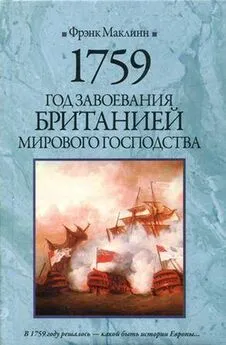
![Ксения Чепикова - Человек, научивший мир читать [История Великой информационной революции]](/books/1059757/kseniya-chepikova-chelovek-nauchivshij-mir-chitat-ist.webp)
